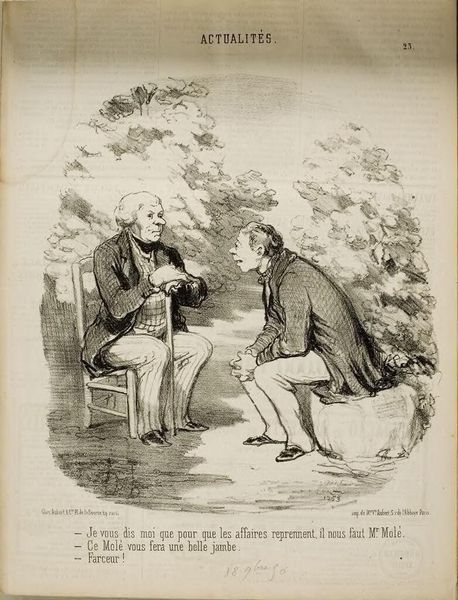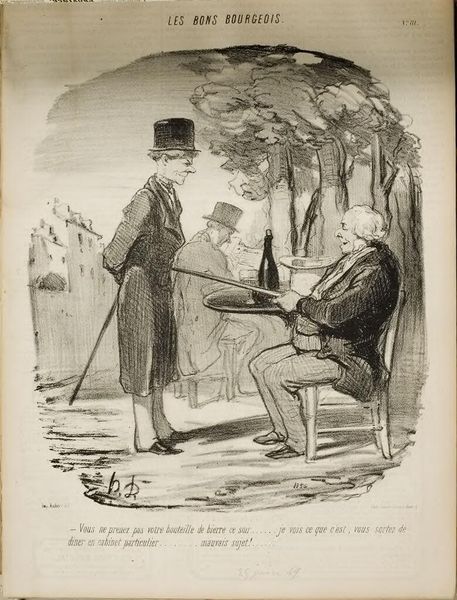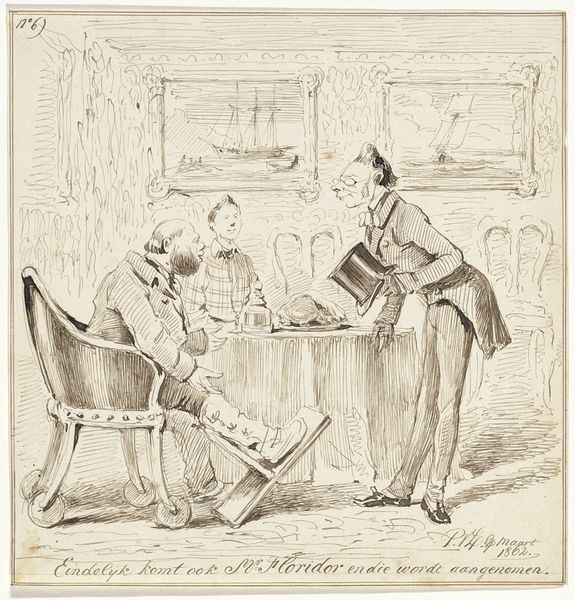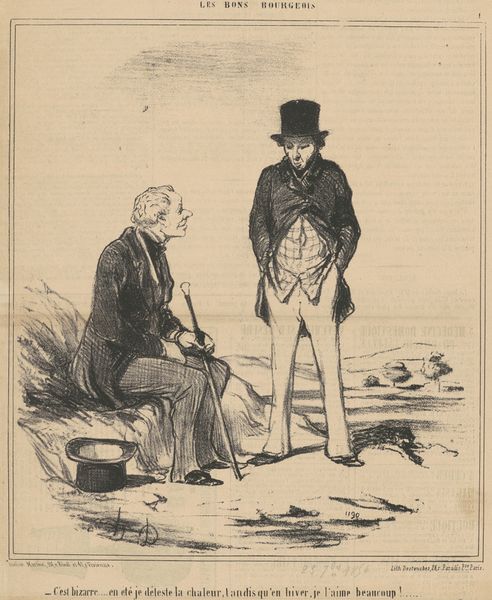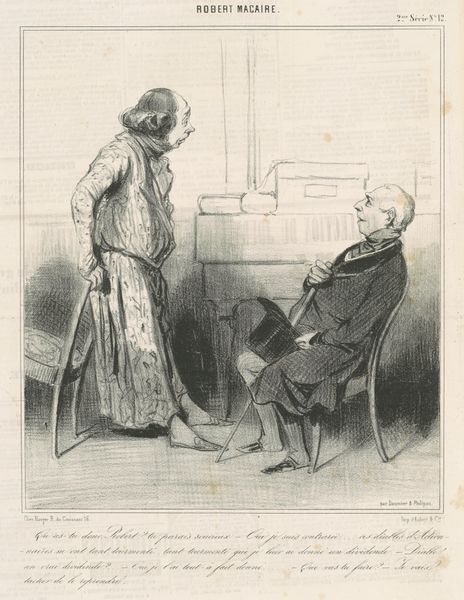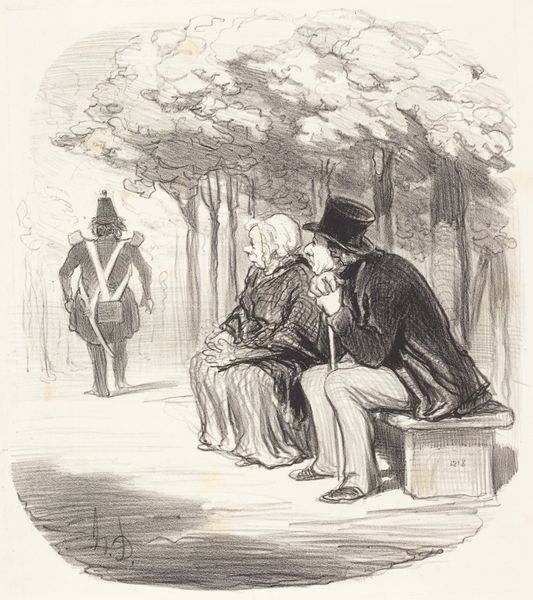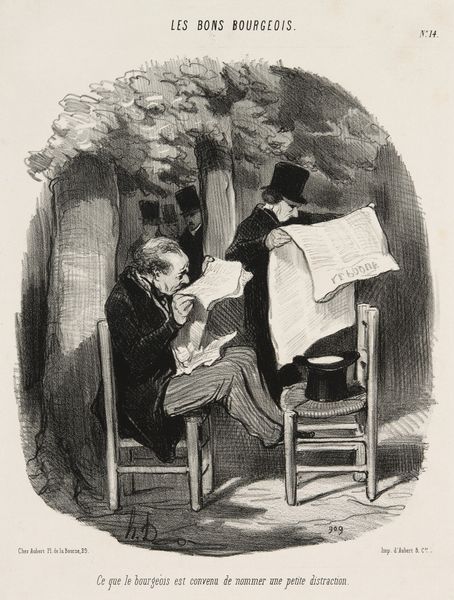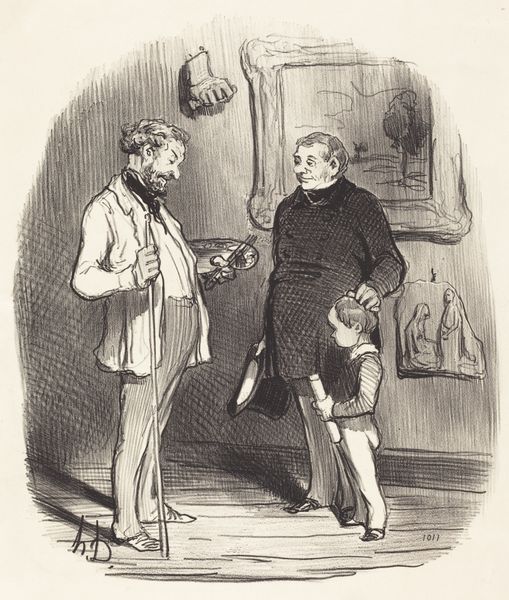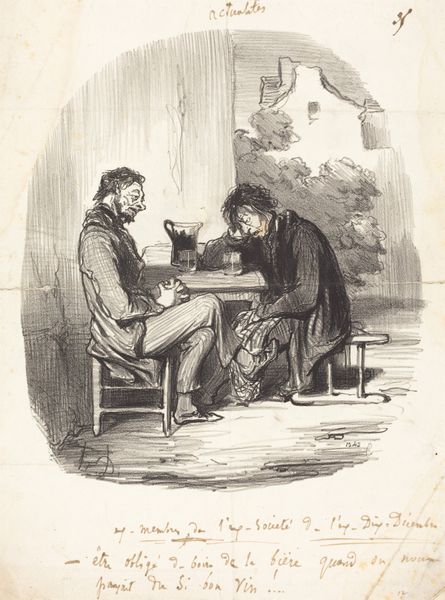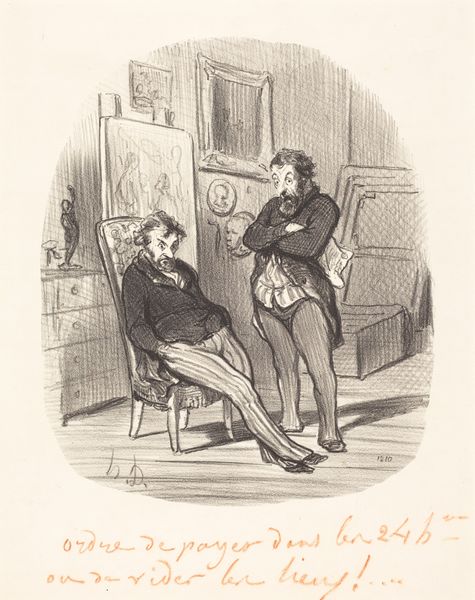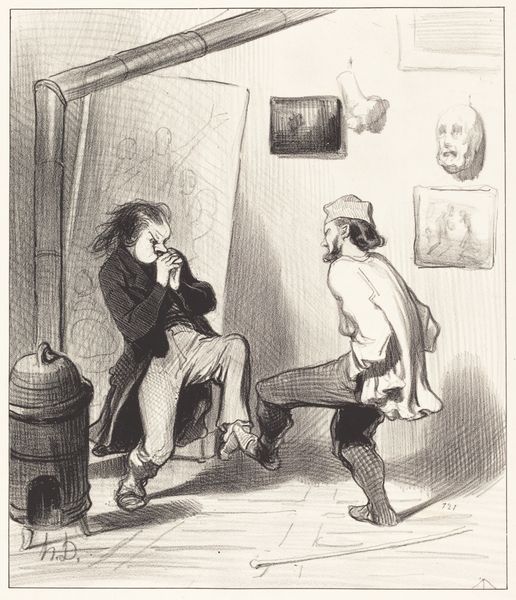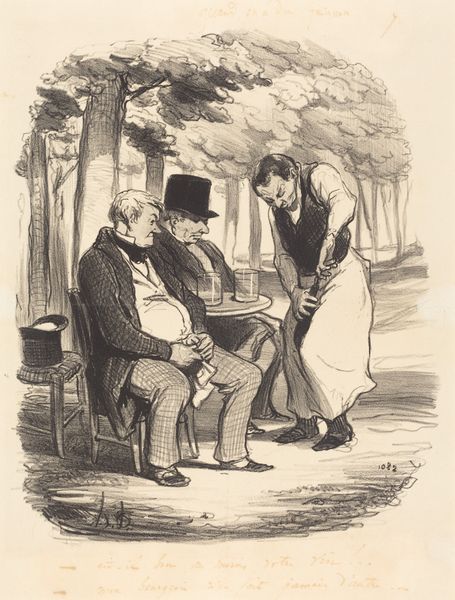
lithograph, print
#
lithograph
# print
#
caricature
#
figuration
#
romanticism
#
genre-painting
Copyright: National Gallery of Art: CC0 1.0
Curator: This is an early 19th-century lithograph by Honoré Daumier titled, "Je vous dis que... il nous faut M. Molé..." It's a satire of French political life. What’s your immediate impression? Editor: I find it strikingly familiar. Even without knowing the political context, the weariness in the older gentleman’s posture, contrasted with the nervous energy of the younger man, speaks volumes about generational conflict and shifting ideologies. Curator: Daumier was a master of capturing social and political commentary through caricature. This piece comments on the state of French politics. Molé, a prominent politician, is being presented as the solution to reigniting commerce by one character, as you noted, an anxious looking younger man seated, and rebutted by the elder statesman with skepticism. Editor: It's brilliant how Daumier uses body language to convey power dynamics. The elder statesman seated and imposing, leaning on a walking stick for support conveys authority and tradition and perhaps resistance to change. While the anxious hands and forward-leaning posture of the second individual express the vulnerability of supplication. Curator: Indeed. Daumier often used caricature to criticize those in power. His work appeared in journals like "Le Charivari", shaping public opinion and sometimes landing him in trouble with the authorities. His works become documents in their own right. Editor: The choice of lithography as a medium also adds layers. It democratized art, allowing for wider dissemination of these critical perspectives. Prints like these helped build a visual culture of political resistance. How was Daumier able to make this piece so evocative, almost haunting, with simple black lines on paper? Curator: Daumier had a knack for pinpointing what mattered, what moved public sentiment. You feel that Daumier himself sided with the seated man and sees Mole for who he really is—which leads one to ask what he stood for. But we know Daumier didn’t support status quo and that is well on display in this work. Editor: It's a potent reminder of art's ability to engage with political discourse and provide ongoing perspectives into a world in turmoil, giving an immediacy and emotional weight beyond textbooks. Curator: Agreed. Studying pieces like this opens a fascinating window into the social and political currents of the past, and a greater understanding of some things never change. Editor: Absolutely, it seems history keeps happening with similar issues repeating and different generations trying to resolve it.
Comments
No comments
Be the first to comment and join the conversation on the ultimate creative platform.
